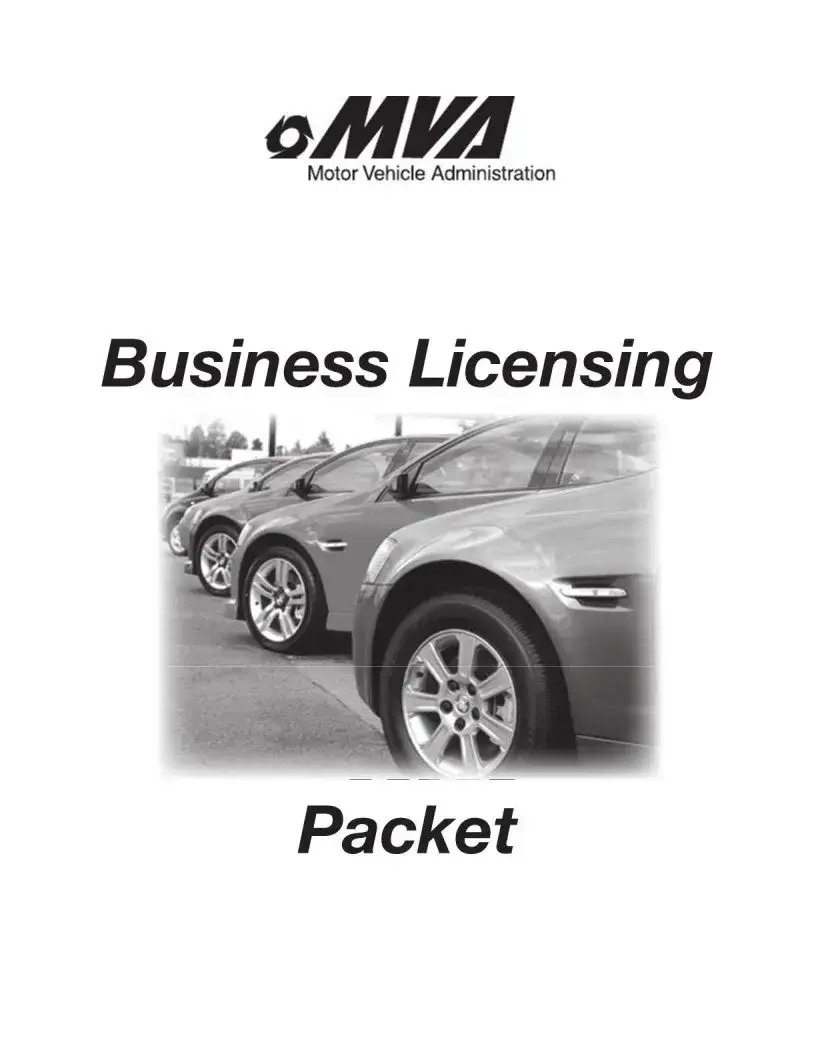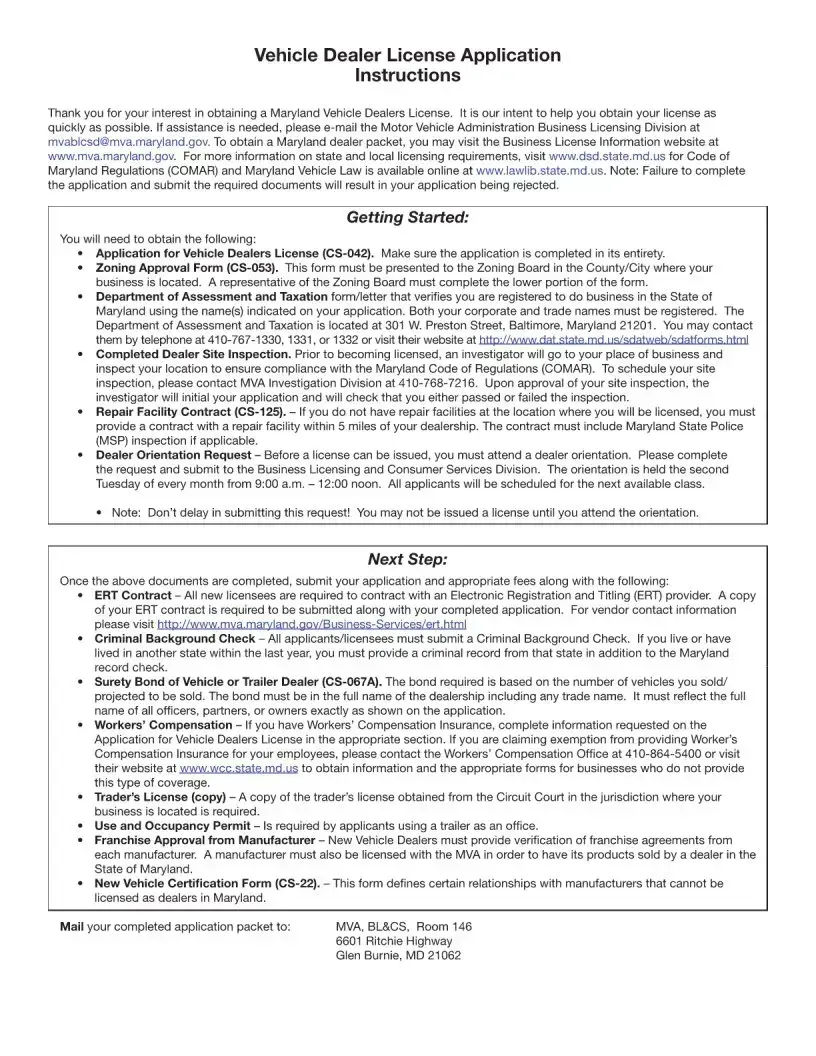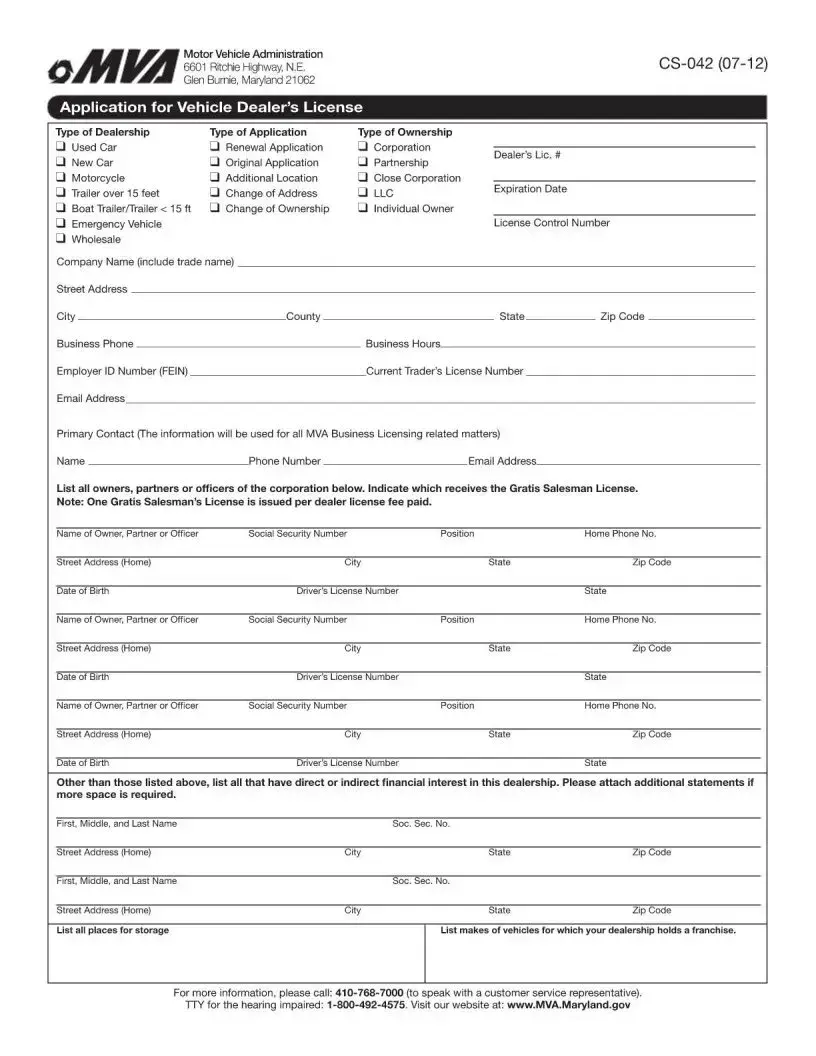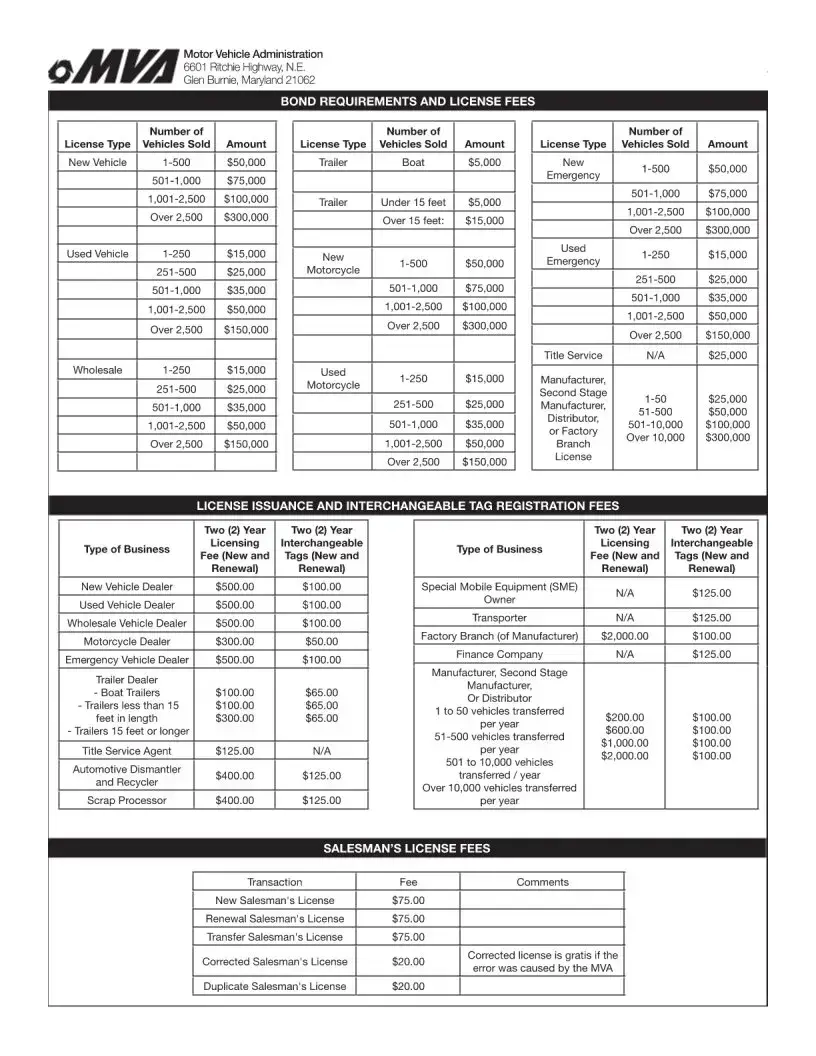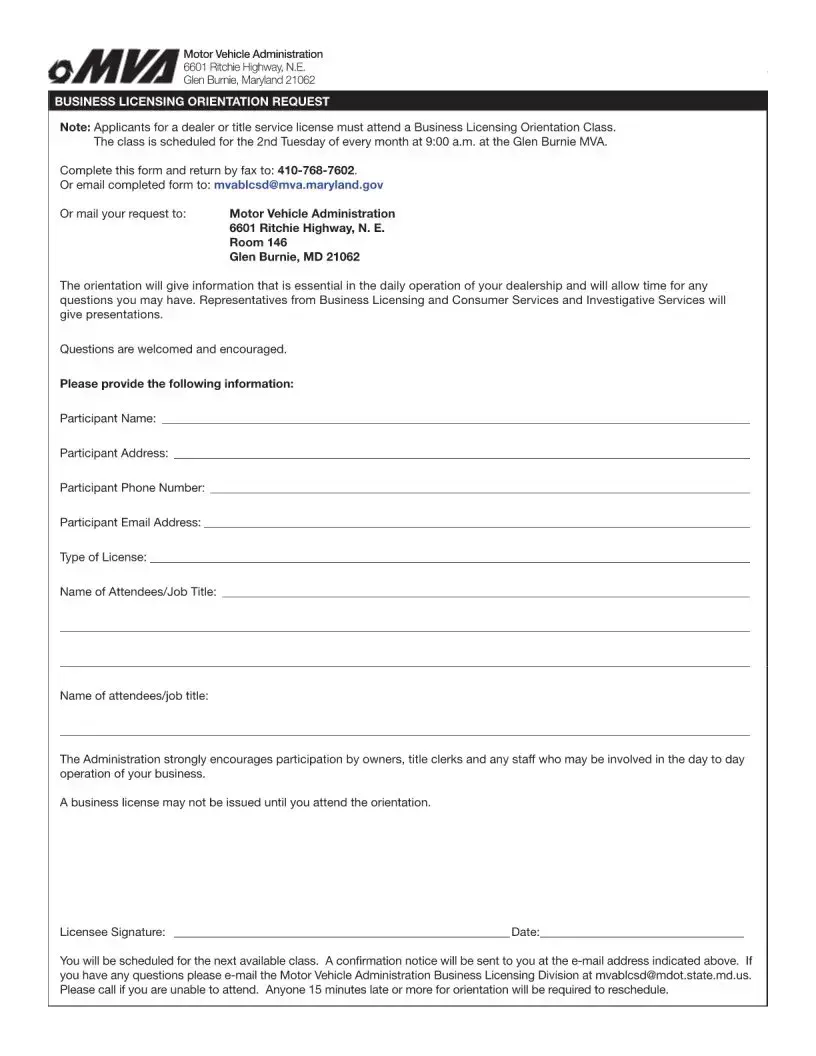What is the Maryland Application for Vehicle Title and Registration?
In Maryland, the Application for Vehicle Title and Registration, also known simply as the form VR-005, is a mandatory document that an individual or entity must submit to the Maryland Motor Vehicle Administration (MVA) to register a vehicle in the state. It is used to establish legal ownership and to obtain license plates for the vehicle.
This form must be filled out by anyone who is:
-
Purchasing a new or used vehicle in Maryland.
-
Moving to Maryland and bringing a vehicle to be registered in the state.
-
Transferring vehicle ownership, whether selling, gifting, or inheriting a vehicle.
To complete the form, you will need to provide various pieces of information, including:
-
Personal details like your name, address, and driver's license number.
-
Vehicle information such as the make, model, year, VIN (Vehicle Identification Number), and odometer reading.
-
Details regarding the purchase of the vehicle, including the purchase price and date of sale.
-
Information about any liens against the vehicle.
Where can I obtain the Maryland Application for Vehicle Title and Registration?
The form is available for download on the Maryland Motor Vehicle Administration (MVA) website. It can also be picked up in person at any MVA branch office. Alternatively, calling the MVA Customer Service Center or visiting a licensed tag and title service can also provide access to the form.
Currently, the Maryland MVA does not offer an online submission option for the Application for Vehicle Title and Registration. Applicants must submit their completed form either in person at an MVA branch office or via mail. It's crucial to ensure that all sections of the form are completed accurately to avoid delays in processing.
What fees are associated with the Maryland Vehicle Application?
The fees for vehicle registration in Maryland can vary based on several factors, including the vehicle type, weight, and the type of registration. Generally, the fees might include:
-
Title fees
-
Registration fees
-
Sales tax based on the purchase price of the vehicle
-
A lien recording fee, if applicable
You should visit the Maryland MVA website or contact them directly for the most current fee schedule.
How long does it take to process the Maryland Application for Vehicle Title and Registration?
The processing time can vary, but typically, the Maryland MVA processes applications for vehicle titles and registration within 7 to 10 business days after they receive all the required documents and fees. This timeline may be longer if there is an issue with the application or during peak submission periods.
Is insurance required to register a vehicle in Maryland?
Yes, Maryland law requires all vehicles registered in the state to be insured by a company licensed in Maryland. Proof of insurance must be presented at the time of registration. The insurance policy must meet the state's minimum liability coverage requirements.
